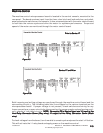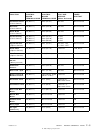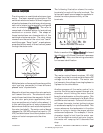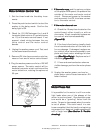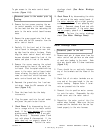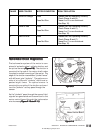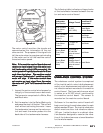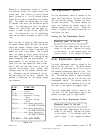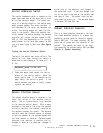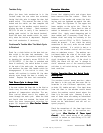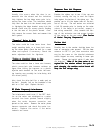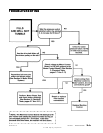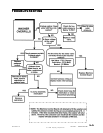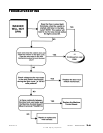
© 1998 Maytag Corporation
2-13
16008373-01 SECTION 2. ELECTRICAL COMPONENTS & TESTING
Cabinet Vibration Sensor
The cabinet vibration sensor is mounted to the
lower left corner of the machine control
board. This is a piezo-electric strip mounted
to the machine control board. With a mass
attached to the end of the strip, the machine
controller monitors the cabinet vibration as
the machine reaches top speed. The machine
controller uses the vibration sensor to attempt
to spin the washer at the optimum speed with
the least amount of vibration. Optimum speed
changes from machine to machine due to:
changes in mass of the absorber; changes in
Cabinet Vibration Absorber
This is a tuned absorber mounted in the door.
The tuned absorber consists of a mass sus-
pended by springs tuned to vibrate at approxi-
mately 800 rpm. The mass vibrates 180 de-
grees out of phase with the vibration of the
cabinet. This cancels out much of the vibra-
tion caused by the clothes load at 800 rpm (See
Section 5: Cabinet Assembly).
Inertial Unbalance Switch
The inertial unbalance switch is located on the
upper right hand side of the outer tub, in front
of the top concrete weight. The switch con-
sists of a moving weight in the switch body
which presses against the switch contacts. If
the unbalance of the outer tub becomes too
erratic, the moving weight will open the con-
tacts in the switch. When the machine con-
troller senses the switch opening, the machine
controller will reduce the spin speed to 650,
550, or 450 rpm depending on the current
speed closest to the level spin speed (i.e. 625
rpm trip would drop to 550 rpm) (See Figure
2-12).
Testing the Inertial Unbalance Switch:
Testing of the switch may prove difficult. The
switch will not open unless the switch is
moved side to side creating a "G" force of 8 - 9
Ft. lbs.
1. Disconnect power to the unit.
2. Place ohm meter leads across the two ter-
minals of the inertial switch. Move the
switch side to side. If the contacts do not
open easily, the switch is good. If the
switch contacts are open or easily tripped,
replace the switch.
spring rate of the absorber; and changes in
the pulley-belt ratio. It can also change from
run to run due to the size of the clothes load
and type of floor. The sensor finds the opti-
mum speed on every run. The optimum speed
is between 750 and 850 rpm.



